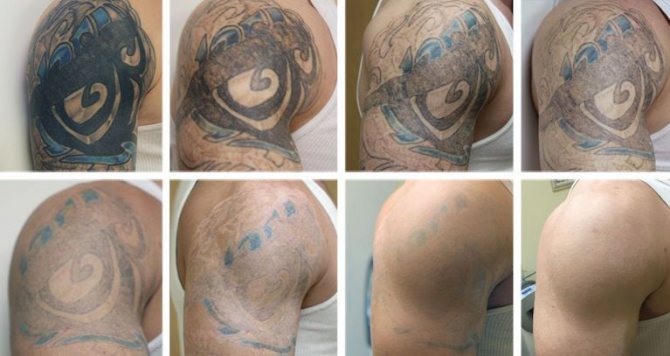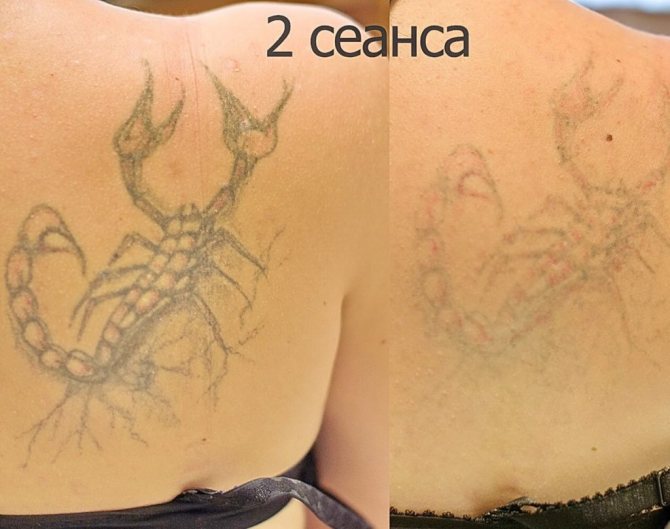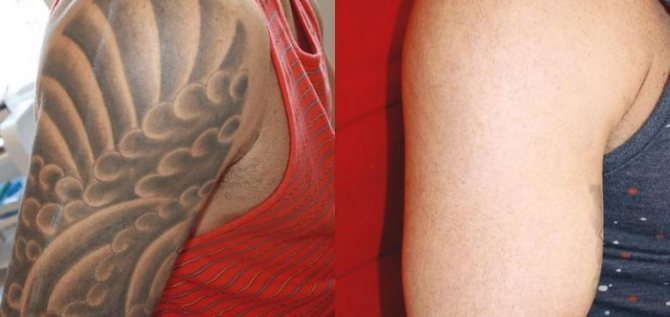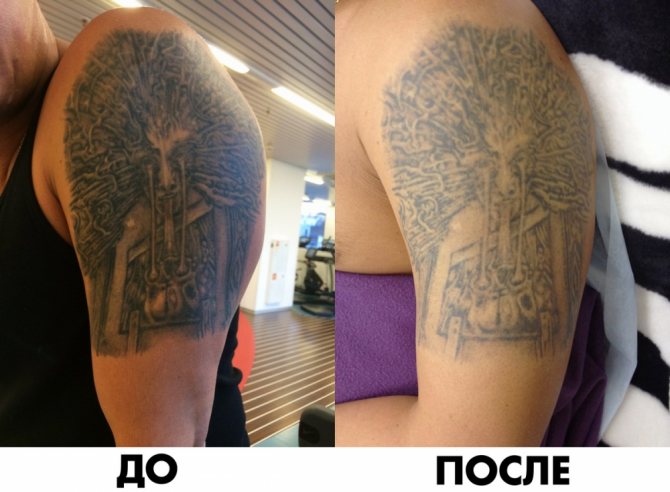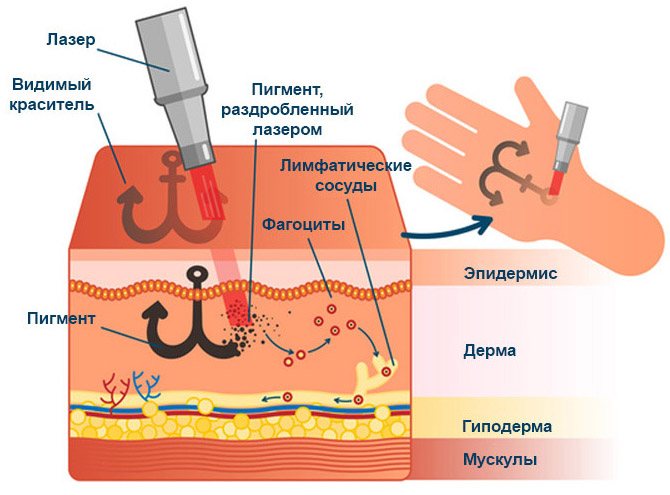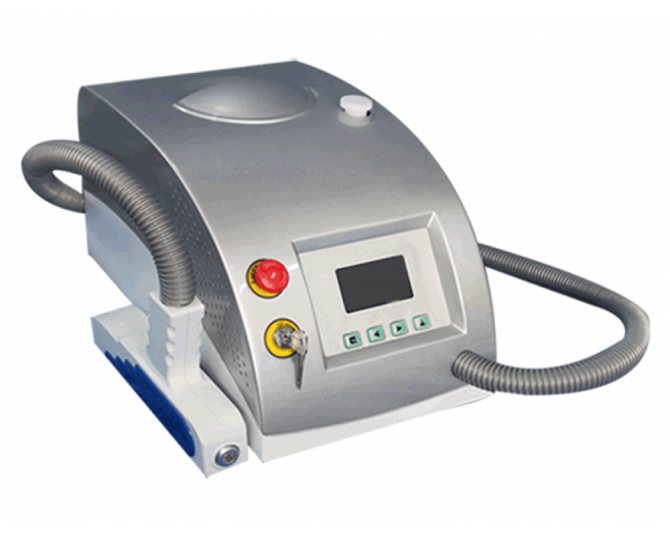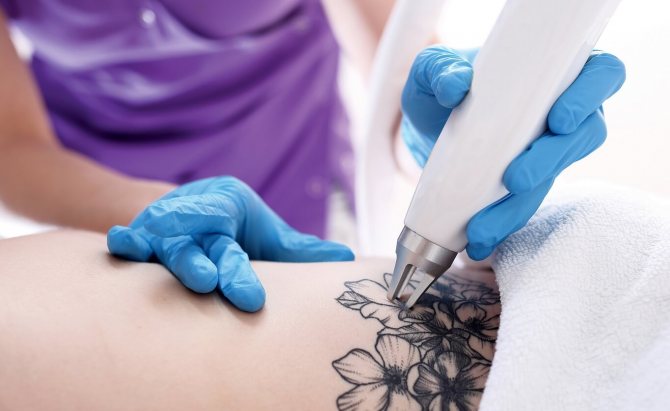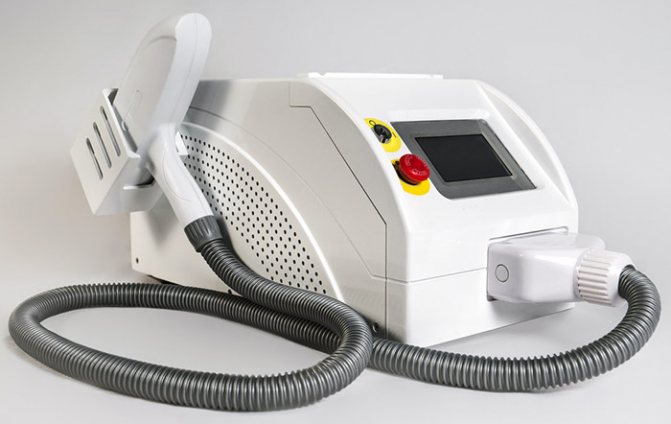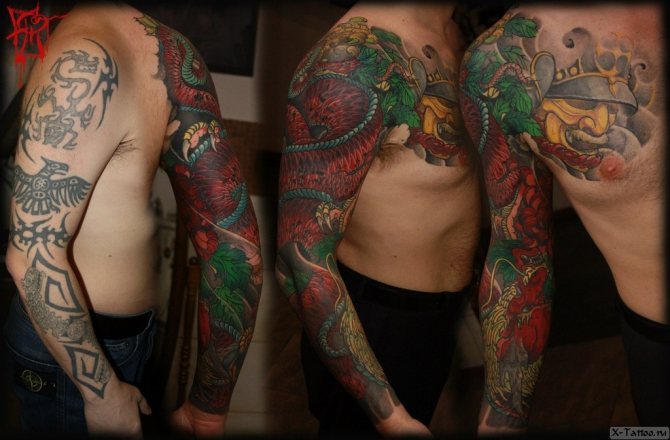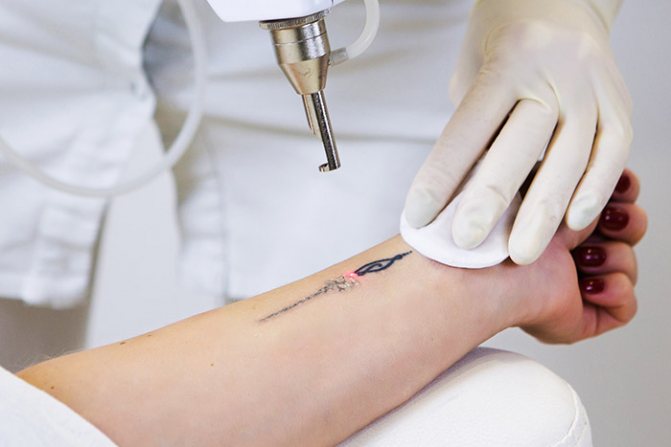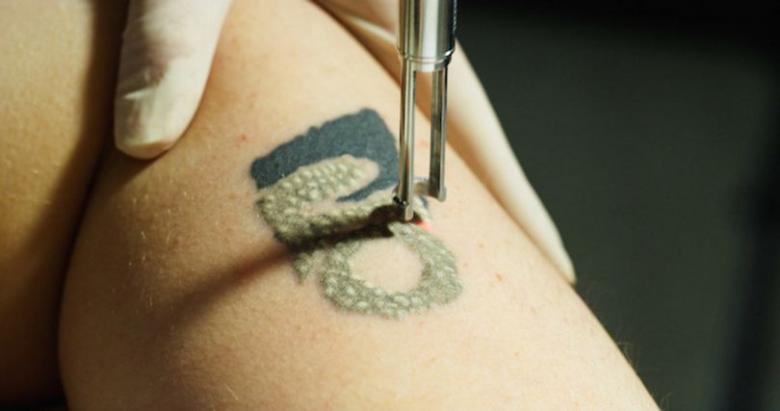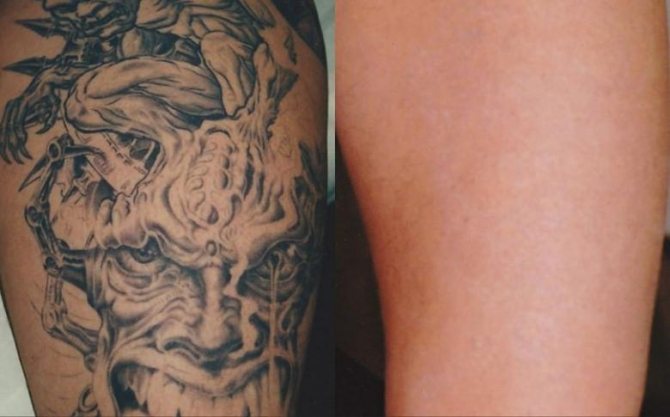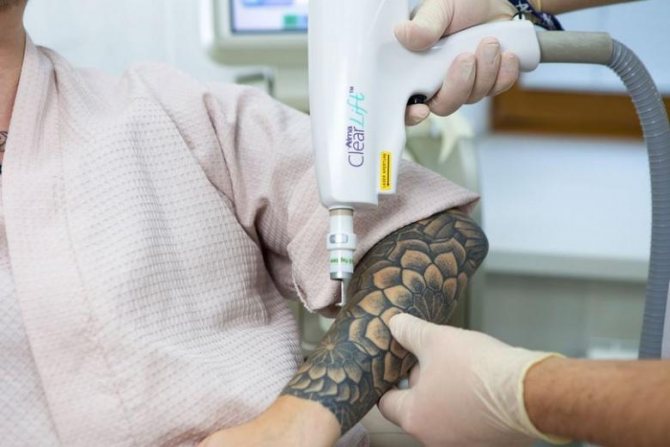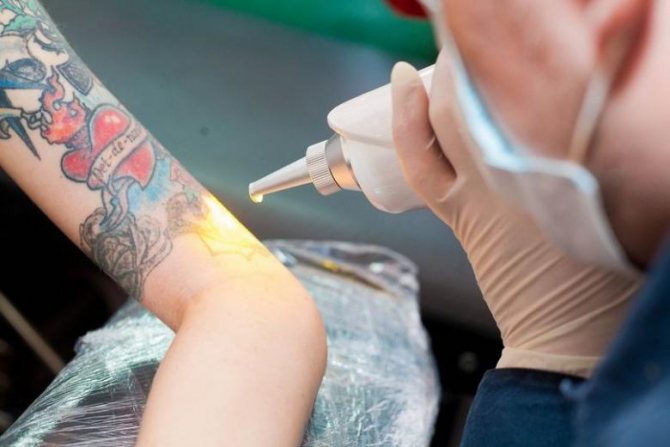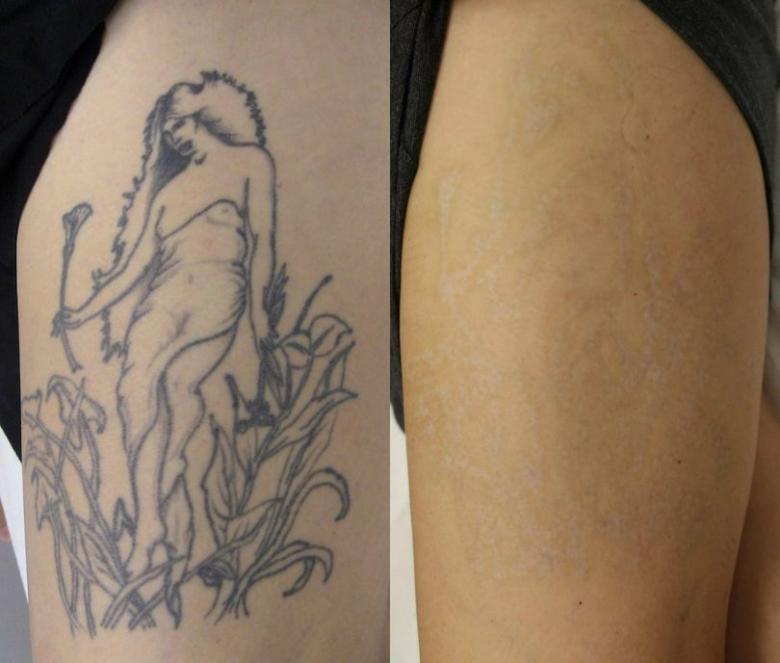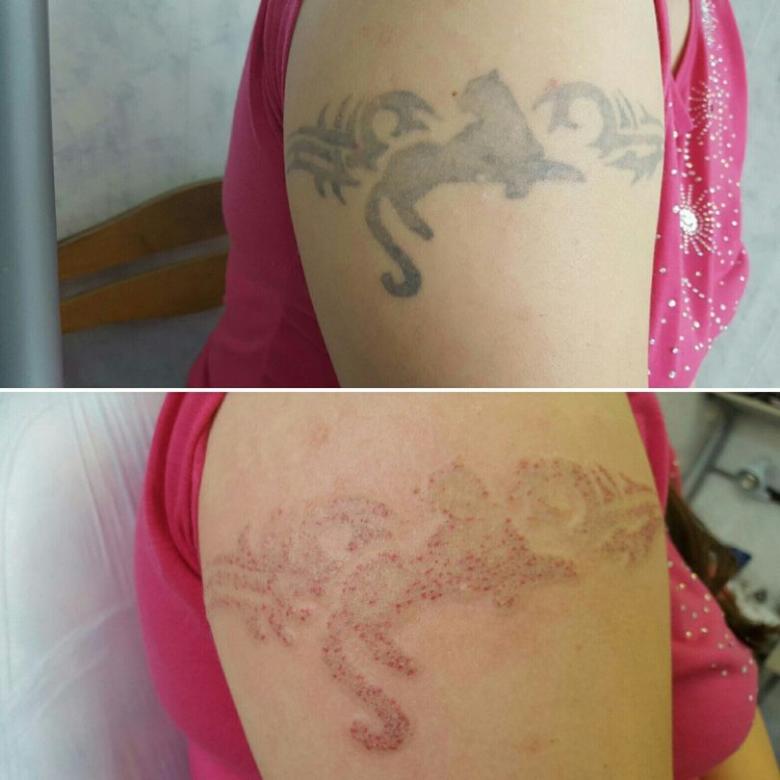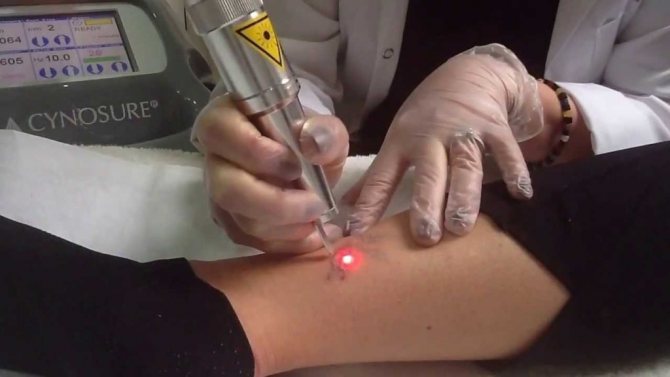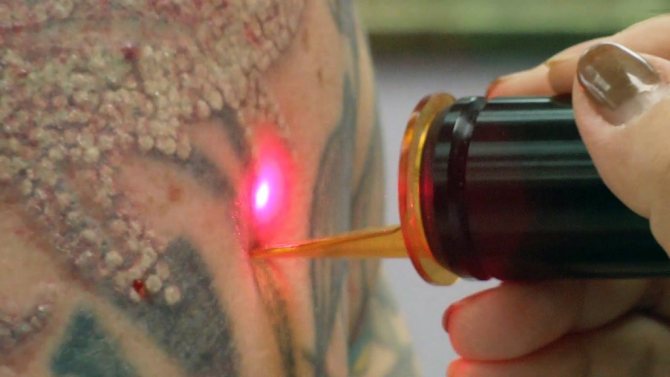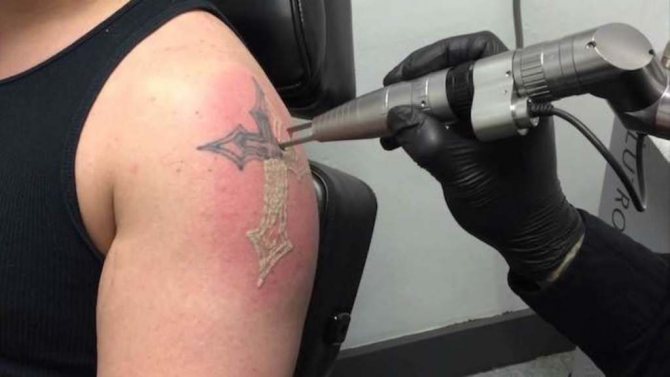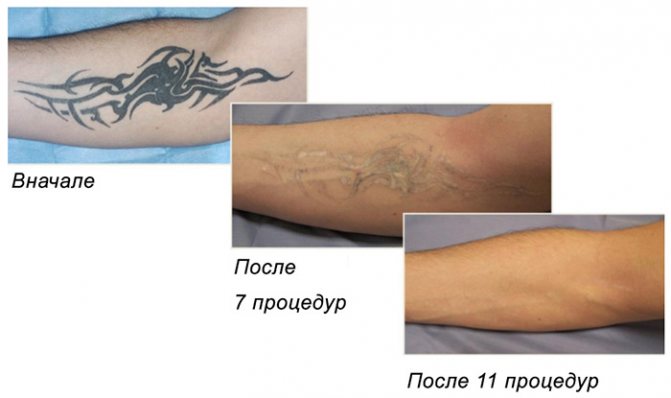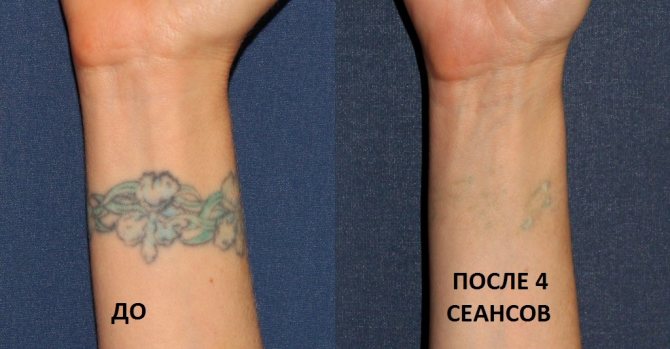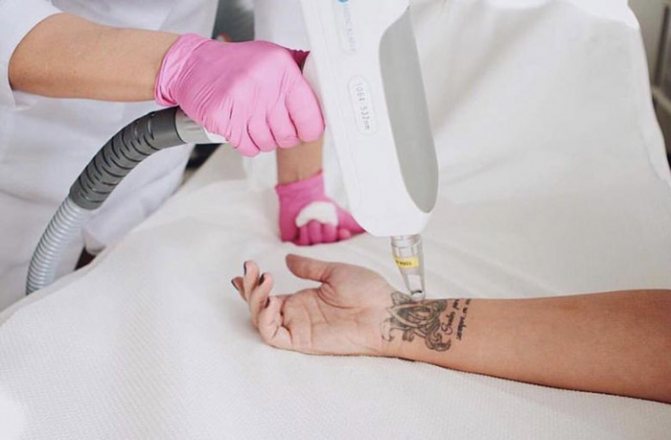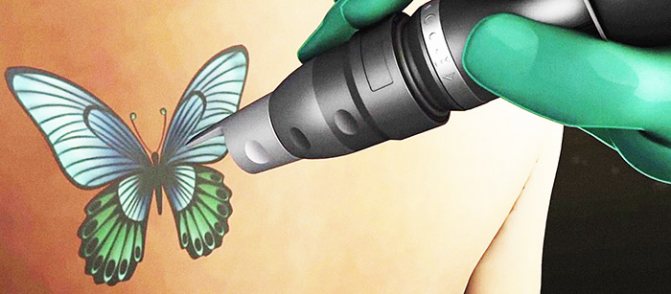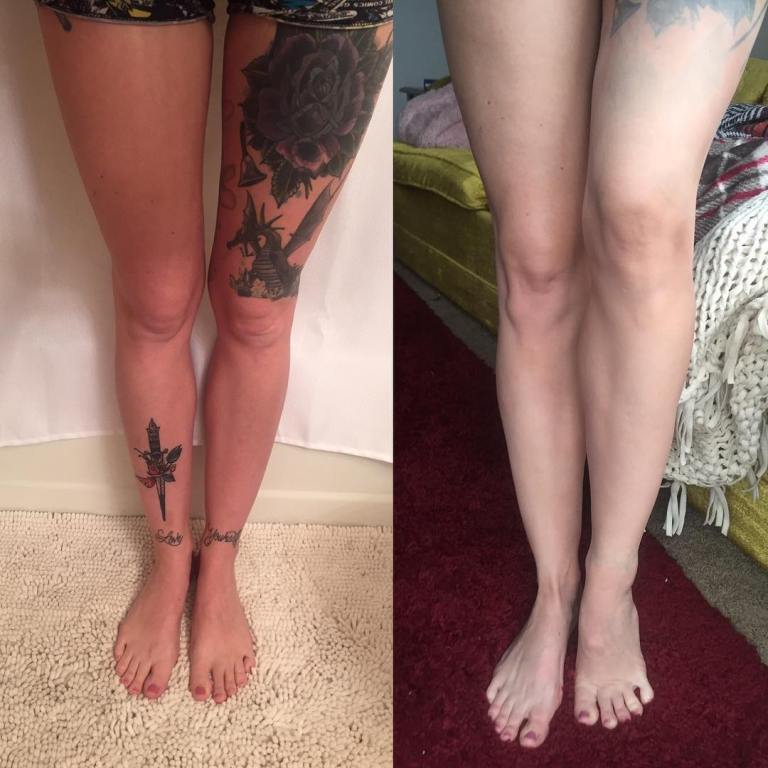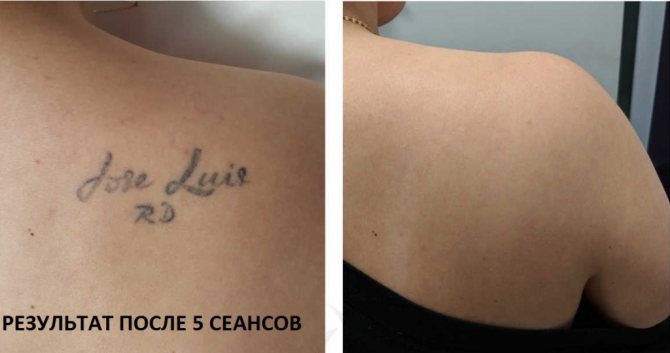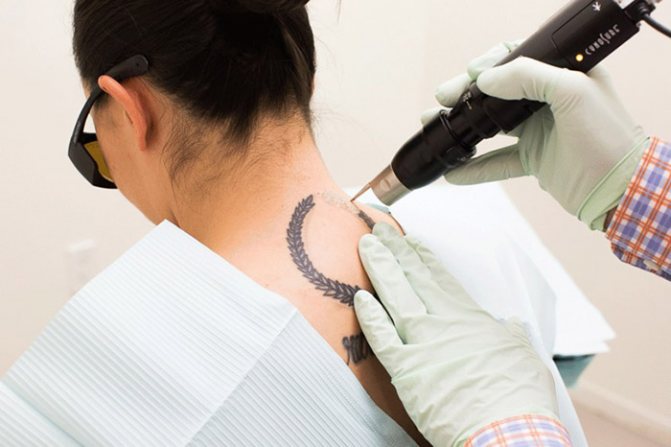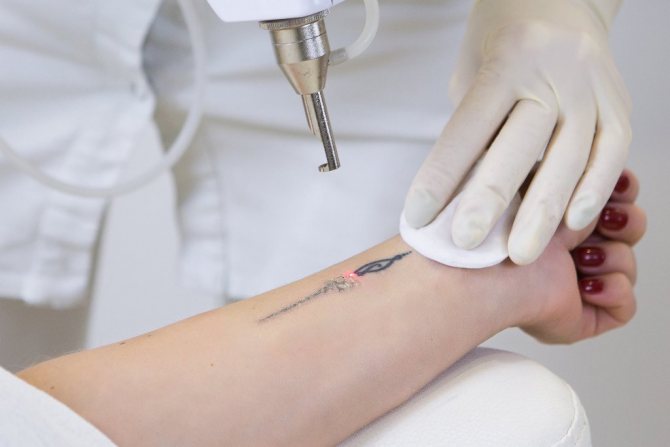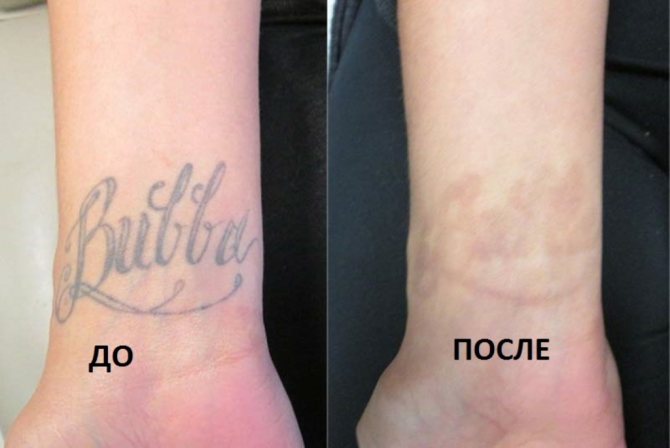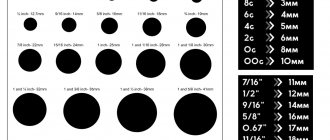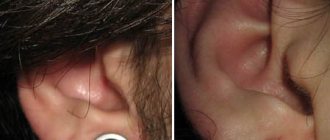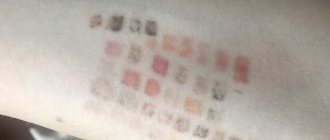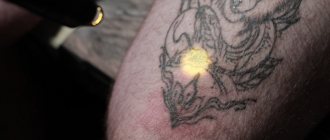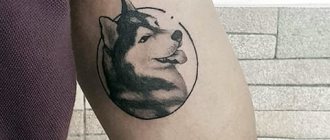The reasons why people remove tattoos can be very different: changed tastes; beloved, whose name was put on the hand, turned out to be an unfaithful woman; instead of a snake the master turned out to draw a worm; it turned out that the character, which is painted on the whole back, does not mean at all what its owner thought, etc.
However everything is fixable - nowadays there are several ways to remove tattoos: masking (i.e. overlaying existing tattoo with skin color pigment), excision (i.e. surgical removal of skin area), cryosurgery (i.e. tattoo removal with liquid nitrogen), electrocoagulation (i.e. This is a very common method of tattoo removal, such as high-frequency current cauterization, dermabrasion (i.e. grinding or scraping the tattooed area of the skin) and laser tattoo removal. However, most of the above methods of tattoo removal in most cases can lead to unwanted scars on the treated area. In contrast, laser tattoo removal is considered more advanced due to the continued development of laser technology.
What questions to ask the medical staff
Talking to the medical staff allows you to find out as much information as possible before the procedure.
The first thing to do is to find out what services the doctor provides. There are more subspecialties in cosmetology.
You can't have someone who practices chemical peels or mesotherapy perform tattoo removal procedures if they don't have the proper education certificate.
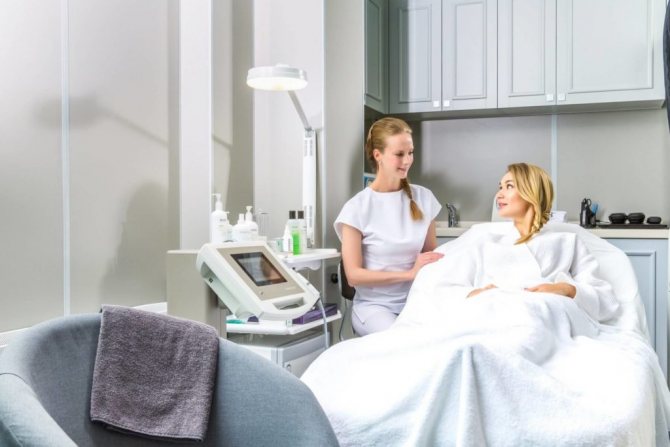
The master must tell and show:
- How the procedure will take place;
- What materials will be used;
- What drugs are used to reduce pain.
You should also learn about possible complications, side effects and warranties.
Contents
- Principle of laser action
- How is this procedure performed?
- Is it difficult to remove a tattoo?
- Are there any side effects?
- Laser removal of tattoos cost
- Contraindications to laser removal
- Benefits of laser removal of tattoos
Previously, in order to remove a tattoo, painful surgical methods, scorching or liquid nitrogen were used, which led to the formation of scars and scars that remained for life.
Today salons in Kiev and other cities in Ukraine offer a painless and non-traumatic method of getting rid of tattoos - laser removal.
Procedure of tattoo removal: what should be alarming
A properly adjusted device will not be able to cause burns that will become scars afterwards. Only redness and swelling may occur after the procedure. These will disappear after a few days.
The fact that the procedure did not harm the skin, you can tell by several signs:
- Altered color of the tattoo;
- The appearance of redness, small swellings in a few minutes after the session.
After the procedure, within 4-6 weeks, the design will gradually fade. There should be no wounds or blisters on the skin.
Not all lasers are completely safe. Ruby or alexandrite lasers are much more difficult to set up, and after their application burns and scars occur more often.
Laser action principle
Thanks to the latest equipment, tattoos disappear without leaving scars. They are removed with machines that generate short pulses of green or red. The flash lasts for one billionth of a second.
During the procedure, the laser light energy is absorbed and the pigment disintegrates into small particles, which are then resorbed. After each procedure, the tattoo begins to fade.
A few weeks after the procedure, the tattoo fades and pales. A repeat session can be done after one month. After each such procedure there is a cumulative effect. This allows the pigment to gradually fade, and the removal process is not interrupted.
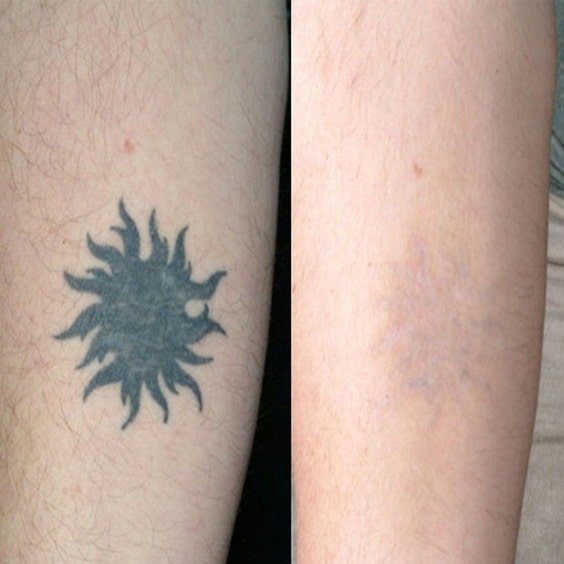

Why does the tattoo darken after laser removal?
It happens that after laser removal, the tattoo darkens. The color of the pigment after the procedure may become even more intense and darker - this is normal. A good master first conducts a consultation, where everything is explained in detail, and then proceeds to the removal.
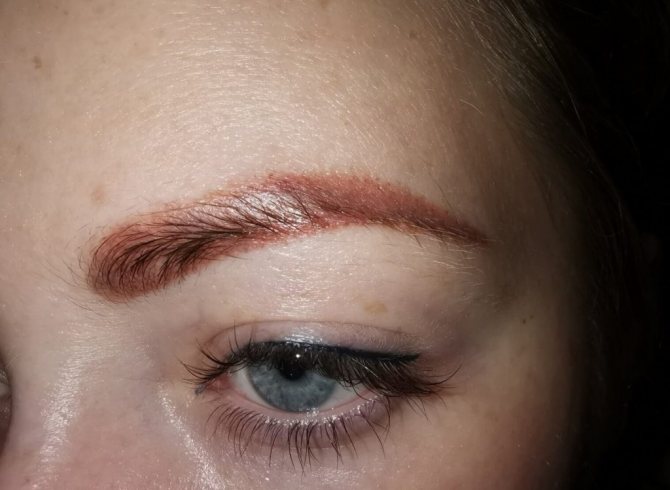

The first reason why the tattoo gets darker and even turns black is the traumatization of the skin during the procedure. The dark color is due to the presence of a specific hematoma. This phenomenon usually goes away within 14 days of the procedure.
The second reason is the pigments used. For permanent makeup, they often use dyes made of warm and cold components. The former are removed in 1-2 sessions, the latter in 3-6 sessions. After the first procedure, under the skin remain pigments of black, gray and dark blue, which before were mixed with red and gave a burgundy or brown hue.
Contraindications to laser removal
There are such prohibitions to this procedure:
- skin diseases (infectious and non-infectious);
- Individual sensitivity to ultraviolet radiation - photosensitization;
- a fresh tan, which is less than two weeks old;
- neoplasms - malignant and benign;
- Pregnancy and breastfeeding;
- epilepsy;
- diabetes mellitus;
- keloid scars;
- acute infectious diseases.
The procedure is not performed on clients under the age of majority.
What can affect the removal effect
The result of tattoo removal by laser can be influenced by many factors:
- Pigment. Black is the easiest to remove. Removal of bright colors (blue, green, red) is more difficult;
- Location. During tattoo removal, the beam penetrates the skin and breaks the paint pigments into small particles, which are removed by the immune system. The removal process occurs differently in different areas. The hardest part is removing the tattoo on the foot, lower leg and thigh;
- Paint overlaps that make it more difficult to remove. The laser beam removes the pigment layer by layer, so the more pigment in the skin, the more removal procedures will be;
- Quality of the tattoo. Professional drawings withdraw difficult, the density of penetration of paint they have more. After such tattoos sometimes there are hazy outlines. In amateur tattooing, some parts lighten faster, while others require several more treatments;
- Spacing between sessions. They should be large enough to allow the skin to recover before the next procedure;
- The qualifications of the doctor;
- Corrections. Tattoos often need corrections due to loss of color. The more corrections there have been, the more treatments will be needed before the tattoo is completely removed.
To achieve a positive effect from the laser tattoo removal it is necessary to listen to the doctor's recommendations and advice. Only then can you expect a positive effect.
In what situations is a tattoo removed?
Reasons for removal tattoo An infinite number, but most of them can be reduced to several points:
- The relationship has changed With the person who inspired the tattoo. A name or a portrait of a girl (guy) tattooed on your body after a breakup is a soul-wrenching memory that you want to get rid of.
- When the body's the figure changes.The image is severely distorted. Inspiring before the pattern becomes a pesky caricature.
- Nowadays, young people are loyal to the tattoo on the body and in most cases it is not a barrier to employment. But this is not always the case and not everywhere. If a coveted high-paying job is at stake, the tattoo is removed.
- When the design was originally done poorly, or deteriorated as a result of improper care in the healing process, it is also disposed of.
- Gone is the adolescent maximalism..
- In older age, there is often a desire to remove the tattoo, made "for the company", which began to look on the body of a solid person ridiculous.
- Some phrases that came from ancient tribes look ridiculous in today's world. When a person learns the true meaning of the hieroglyphs on his body, it is natural to want to get rid of them.
Dermatologists' tips for skin care after the procedure
After the laser, redness and swelling on the skin surface may remain, which disappear within 1-3 days. If a crust appeared, you can not touch it. It falls off on its own after 3-6 days.
At the end of the session, the doctor puts an ointment, usually Bepanten or analogues.The ointment should be used three times a day for 3 days. Apply Bepanten ointment to the affected area, so that it does not itch, there was no tightening.
Do not let the skin exposure to sunlight for 14 days, as well as going to the pool, sauna and steam bath.
Benefits of laser tattoo removal
The hardware method has become the most in-demand method for removing old tattoos. Here are its advantages:
- Laser tattoo removal is a painless method, no local anesthesia is used for it. During the procedure, the client will only feel a tingling sensation in the area where the device is applied.
- Safety. Previously, surgical methods of tattoo removal were used, which left scars on the skin. There were also complications of infectious nature. Such complications are excluded when laser is used.
- Quick recovery. After laser removal, the skin heals faster in comparison with surgical methods. The recovery period is not more than one week.
- Quickness of procedure - the procedure lasts 5-30 minutes.
Laser removal of tattoos is the most modern and effective method, which does not cause any harm to your health. Modern devices will help to get rid of annoying drawings on the skin, without leaving scars.
Why is there swelling
Swelling after laser removal of eyelid or eyebrow tattooing - a common reaction of the body - usually goes away the next day. Reddening, mild swelling is considered a normal response of the epidermis and the immune system when exposed to radiation. Such a complication can be caused by an allergy to the anesthetic cream, as well as by high skin sensitivity.
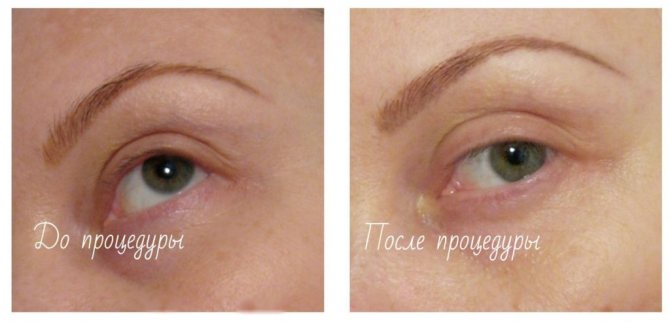

Often there is swelling after removal of eyebrow tattoo by laser. If the inflammation is severe and lasts four or more days, you should consult a doctor.
Swelling of the treated area may be due to an infection that was brought in during or after the session.
What is important to know about laser tattoo removal?
Laser image removal gives the desired effect only if it was applied by a professional in a tattoo salon. However, there are so-called artisanal tattoos, which are often applied not a special dye, and ordinary ink. Removal of such tattoos - the process is extremely difficult and for its result is difficult to vouch.
In addition, much depends on the size of the picture - the bigger it is, the longer it takes to remove tattoos with a laser. Small images lose color very quickly and soon disappear altogether.
Cost
It is commonly believed that the price of laser correction is quite high. In many respects this statement is true, however, it should be remembered that the costs of patients can vary greatly and depend on such factors as:
- The size of the area to be treated.
- The depth of implementation of the dye composition, its type, and sometimes the color.
- The type of laser used.
- The qualifications of the specialist who performs the manipulation.
| Price per 1 sq. cm | From 300 (total from 300) | From 250 (total from 1250) | From 200 (total from 2000) | 100 - 150 (total from 3000) | From 80 - 100 (total from 4000) |
| Tattoo size (sq. cm) | 1 | 5 | 10 | 30 | 50 |
The price listed in the table is indicative and determines the cost of a single laser correction session. If repeated work is necessary, a similar amount will have to be paid again.
Pros and cons of using lasers
In addition to laser removal, there are alternative methods.
A brief overview of the techniques allows you to evaluate the advantages of choosing to use laser:
- Surgical removal. This is the most traumatic method, which is used only in emergency cases. Dermal dissection is practiced to remove the pigment.
- Chemical discoloration. An alternative to the effects of the laser, which involves the use of special discoloration ointments. On the one hand, the technique completely eliminates skin trauma. On the other hand, it affects all systems of the body, as chemical agents enter the bloodstream and spread through the bloodstream.
- Treatment with nitrogen. This is a kind of scorching, which leads to the necrosis of the upper layer and further exfoliation. This method is considered relatively inexpensive, but one of the most painful.
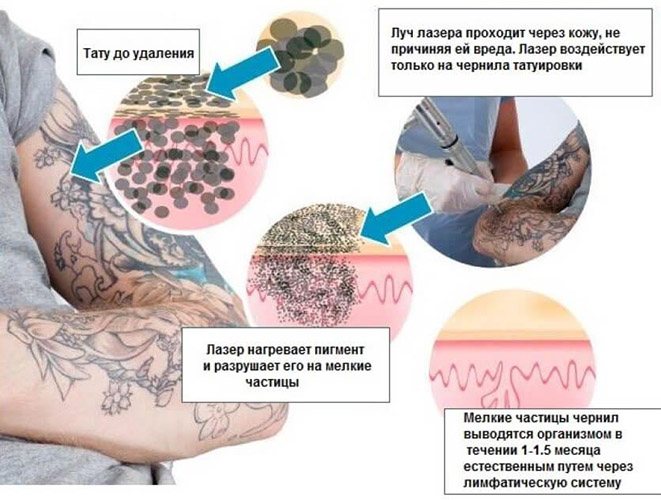

Laser removal is a modern and effective technique that is suitable for those who have decided to get rid of tattoos. Possible side effects are associated with a violation of the technique of applying the original design or the use of low-quality coloring pigments. If the tattoo was done in a salon on good equipment, laser removal for a few sessions will lead to the complete disappearance of images from the surface of the skin.
Laser removal and lightening of tattoo
Laser tattoo removal is one of the most effective. It represents the crushing of the paint pigments with a super thin beam of light. To reduce swelling, ice is placed on the skin. Then it is smeared with an ointment with a disinfectant effect and put on a sterile dressing.
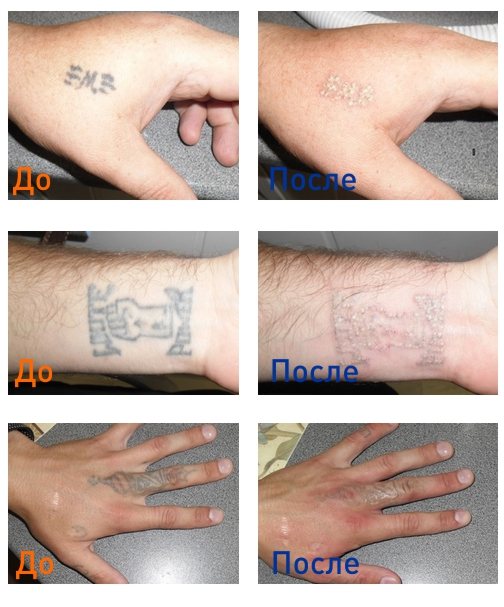

Tattoo removal: before and after photos
The laser method has many advantages:
- Absence of scars on the skin;
- Relative painlessness;
- The procedure lasts from 5-10 minutes to 60 minutes;
- Safety;
- Allowed to use on the face, including the removal of the tattoo from the eyelids;
- Short recovery period;
- The laser is suitable for both women and men.
Dermabrasion of tattoos
This method is radically different from removing tattoos with a laser or other methods of non-contact exposure. The method is based on the process of resurfacing the skin. The doctor uses diamond cutters, which mechanically scrape off the skin its surface cells, capturing along with it and the pigment contained in them.
The advantage of the procedure is that it is equally effective with any set of tattoo shades. Its main disadvantage can be considered traumatization of the skin, accompanied by the risk of infection. The patient has to wear a bandage on the treated part of the body most of the time, and since the number of procedures can be large and carried out at considerable intervals, this method can become extremely uncomfortable for him. Between sessions, it is necessary to treat the tattoo area regularly with antiseptics and keep an eye on its condition. Removal of large tattoos by this method is undesirable.
Process
Laser Tattoo Ink Removal is performed in the following cases: - The image or text has lost symbolic value. - The tattoo is poorly applied and will not be corrected. - The picture should be lightened or completely remove part of it.
The process of removing a tattoo (tattoo) is much more painful than driving the pigment in. To completely get rid of the ink under the skin, you will need up to 6 treatments. The cost of tattoo removal is higher than its application.
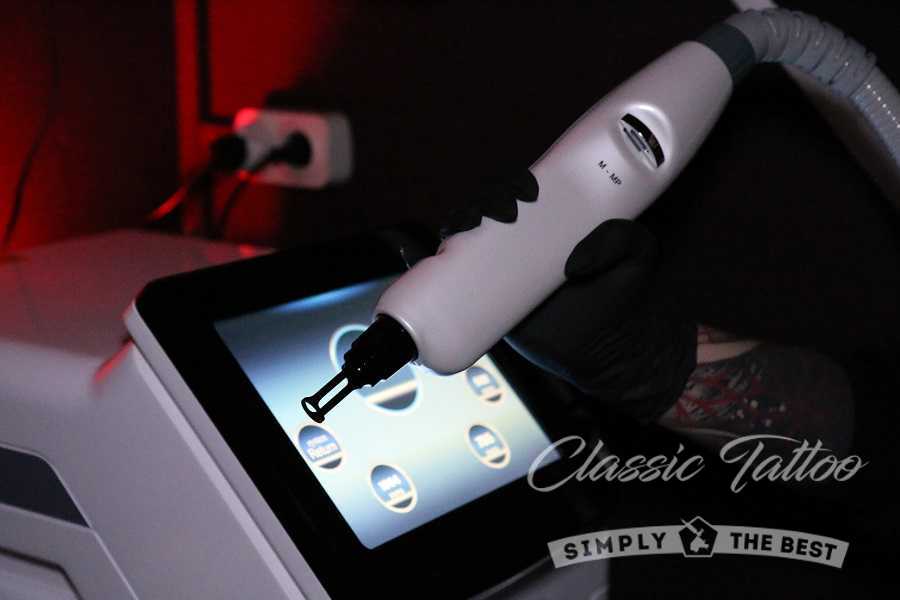

Sign up for a session
Which tattoo is easier to remove: a fresh or an old one
Decorations older than 10 years are removed in half the time it takes to get rid of a fresh design. Reasons why older tattoos are easier to get rid of:
- The sun works like a laser over a long period of time, gradually destroying the paint particles in the top layers of the skin;
- The immune system considers the tattoo a foreign inclusion and tries for years to destroy the ink.
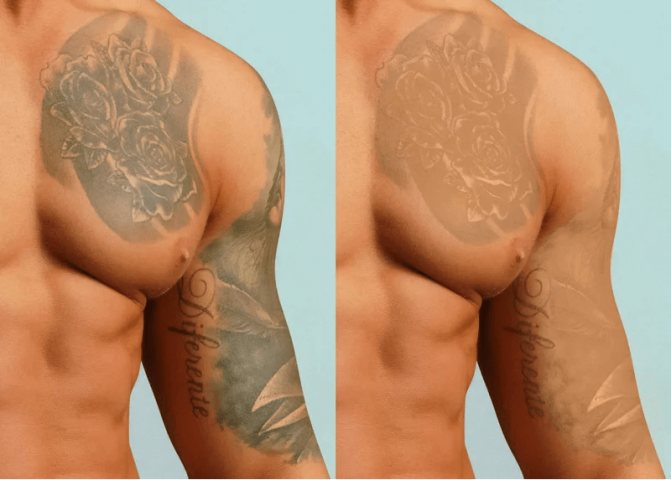

People with old tattoos will need no more than 6 sessions to completely remove the design. The effectiveness of the procedures is influenced by the same factors as for new tattoos - the pigments used, the location on the body, and the saturation of the ink.
Lightening of a tattoo at Cover up
Getting the dye out during overlapping is a long process. The paint was applied in layers, clogging the skin layer with large amounts of granules. Removing such work may require the additional use of lightening agents.
Some sources claim that it is impossible to remove such work. But this is not the case. The destruction of the dye occurs on a molecular level.
Special medications are used to prevent inflammation from the excess of destroyed granules. A person is prescribed a course of vitamins and sorbents.
The cleansing procedure is divided into stages. Not the entire area is cleared, but square by square. The distinction from the removal of a tattoo with a single layer pattern can be a change in the pigmentation of the skin area.
If the former drawing was closed in the technique of blackwork, the consequence will be yellowed skin with a visible outline of the former work.

